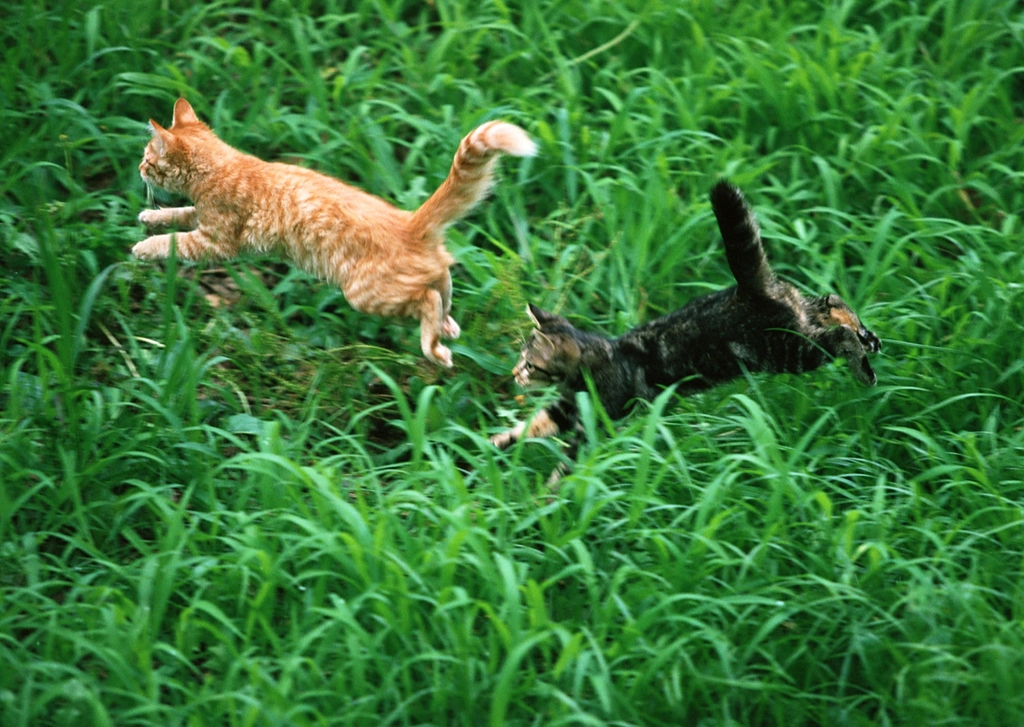Have you ever watched your cat transform from a bundle of nerves into a relaxed, affectionate companion? Witnessing these changes can be deeply moving, and sometimes even miraculous. For many cat lovers, seeing a once-anxious feline trust again is proof of the power of emotional healing. Cats, like people, carry their past experiences in their behavior, and their journey from fear to love is a story worth celebrating. This article uncovers ten distinct reactions in cats that only appear after true emotional healing. If you’ve ever rescued or rehabilitated a cat, you’ll recognize these signs—each one a quiet victory, a testament to resilience, and a reason to hope for every frightened kitty out there.
1. Seeking Out Affection on Their Own Terms

One of the most touching signs of a cat’s emotional healing is when they begin to approach you for affection, instead of shrinking away. Cats that have suffered trauma or neglect often keep their distance, watching every movement with wary eyes. But as they start to heal, they’ll tentatively nudge your hand, curl up beside you, or even climb onto your lap, asking for pets and cuddles. This shift is remarkable because it shows a newfound trust; they’re choosing closeness instead of hiding. Sometimes, it begins with a gentle headbutt or a quiet purr, as if they’re testing the waters. Over time, these moments grow longer and more frequent, melting even the hardest hearts. When a cat initiates contact, it’s more than just a bid for warmth—it’s a message: “I feel safe with you now.” For many pet owners, this is the moment they realize their cat’s heart is truly healing.
2. Relaxing Their Body Language

A cat’s body tells a story long before their voice does. After emotional healing, cats often show physical signs of contentment that simply weren’t there before. Where once their tails might have been tucked and their bodies held tightly, now you’ll notice them stretching out, exposing their bellies, or loafing comfortably in open spaces. Their ears relax, their eyes soften, and their paws knead the air in bliss. These are not small changes; they signal that your cat feels safe enough to let their guard down. It’s like watching a tightly wound spring slowly unwind, revealing the gentle creature within. Each relaxed pose, every sleepy yawn, is a silent testimony to the comfort they’ve found in their new world. In homes where tension once hovered, these peaceful postures bring a deep, soothing joy.
3. Playfulness Returns

Play is a luxury that only a secure cat can afford. Before emotional healing, many cats ignore toys or even flinch at sudden movements. But as their confidence grows, so does their curiosity. Suddenly, the rustle of a paper ball or the flutter of a feather wand becomes irresistible. They chase, pounce, and leap, rediscovering the joys of kittenhood they may never have known. Playfulness is not just about fun—it’s a profound indicator that your cat feels safe enough to let their instincts shine. Sometimes the transformation is so dramatic it’s almost hilarious; a cat who once hid under the bed now gallops through the house, tail held high. For owners, these silly antics are a daily reminder that healing has taken root. Every playful paw-swipe tells you your cat is finally beginning to thrive.
4. Eating Calmly in Your Presence

Food is a basic need, but for many cats with emotional scars, mealtime is fraught with anxiety. They might eat only when alone or bolt at the slightest noise. As healing progresses, cats start to eat more calmly and confidently, even when you’re nearby. You’ll notice fewer nervous glances over the shoulder and more peaceful munching with relaxed whiskers. In some cases, a cat may even invite you to watch or sit with them, a gesture of trust that’s deeply touching. This change speaks volumes because eating is a vulnerable activity for animals. When a cat can eat in your presence, it means they no longer see you as a threat. It’s a sign their emotional wounds are healing, and their home feels truly safe. For many caretakers, these quiet, shared moments at the food bowl become a cherished daily ritual.
5. Exploring New Spaces With Confidence

A fearful cat often sticks to familiar hiding spots, rarely venturing out of their comfort zone. One of the most inspiring signs of emotional healing is when a cat begins to explore new areas of the house. Suddenly, that timid kitty who never left the closet is perched on the windowsill or surveying the kitchen counters with bold curiosity. Exploration is a sign of confidence. It means your cat feels secure enough to take risks and satisfy their natural curiosity. Each step into a new room is a leap of faith, an act of trust in their environment—and in you. Owners often find these moments heartwarming, watching as their once-sheltered companion finally claims the whole house as their kingdom. It’s a beautiful metaphor for recovery: after darkness, your cat embraces the light.
6. Responding to Their Name or Voice

A cat’s willingness to respond to your voice is a subtle, yet powerful, indication of emotional healing. Traumatized cats may ignore or even fear human voices, associating them with negative experiences. But as trust is rebuilt, you’ll notice your cat start to perk up when they hear their name, or even come running when called. This reaction isn’t just about obedience—it’s about connection. It shows your cat recognizes you as someone safe and familiar, someone worth listening to. Sometimes, they’ll chirp or meow back, starting a conversation that feels almost magical. The first time your cat responds to your voice, it can be a surprisingly emotional experience, a sign that the walls are coming down. It’s these little acknowledgments that make the journey of healing so rewarding.
7. Accepting Gentle Touch and Handling

Many emotionally wounded cats recoil at the touch of a human hand, associating it with pain or fear. As healing takes place, they become more receptive to gentle petting and even being picked up. At first, it might be a tentative brush against your fingers; later, it could be a full-body snuggle or an enthusiastic roll over for belly rubs. Accepting touch is one of the most intimate signs of trust. It means your cat has learned that your hands bring comfort, not harm. For many cat owners, these moments are deeply moving, proof that patience and kindness can transform even the most frightened soul. Some cats will even seek out your hand, pressing their head into your palm or stretching out to meet your caress. Each time they allow themselves to be held, it’s another step on the road to emotional recovery.
8. Displaying Healthy Grooming Habits

Grooming is a fundamental part of a cat’s routine, but emotional distress can disrupt this behavior. Cats who are anxious or depressed might neglect their coats, leading to matted fur and a dull appearance. However, as emotional healing takes root, you’ll see your cat resume their regular grooming sessions—licking, scratching, and preening with renewed enthusiasm. A well-groomed cat is a happy cat. It means they’re comfortable enough to care for themselves and feel good about their surroundings. Sometimes, they’ll even begin to groom other cats or their human companions, a social behavior that signals acceptance and trust. This return to normal grooming is not just about appearance; it’s a clear sign that your cat’s emotional world is stabilizing.
9. Forming Bonds With Other Pets

Cats who have endured hardship can be suspicious, or even aggressive, towards other animals. Emotional healing often brings about a dramatic change in these relationships. Gradually, a once-isolated cat may begin to approach other pets, engaging in gentle play or even snuggling up for a nap together. These new bonds are heartwarming to witness. They show that your cat feels confident enough to expand their social circle and open their heart to companionship. Sometimes, the process is slow, with tentative nose touches and cautious tail flicks. But with time, these small gestures blossom into genuine friendships. For multi-pet households, it’s a sign that harmony is possible, even for cats with a difficult past.
10. Expressing Themselves With Vocalizations

A cat’s voice can reveal a lot about their emotional state. Traumatized cats are often silent, too scared to make a sound. But as they heal, you’ll notice an increase in vocalizations—chirps, meows, purrs, and even the occasional playful growl. Each sound is a form of communication, an invitation to interact. Some cats become quite chatty, announcing their presence or commenting on daily events. Others express happiness with soft trills or contented purrs, filling your home with warmth. These vocalizations are more than just noise; they’re a sign your cat feels comfortable enough to share their feelings with you. Every meow is a little victory, proof that your cat’s spirit is alive and well. For many owners, this newfound “conversation” is both delightful and deeply affirming.

Growing up traveling and experiencing new cultures and wonders, I have had a passion for nature, adventuring, photography, and videography. I am currently working towards a BSc in Biodiversity and Ecology at Stellenbosch University, and I hope to specialise in Marine Sciences one day.
Please send any feedback to Feedback@animalsaroundtheglobe.com





